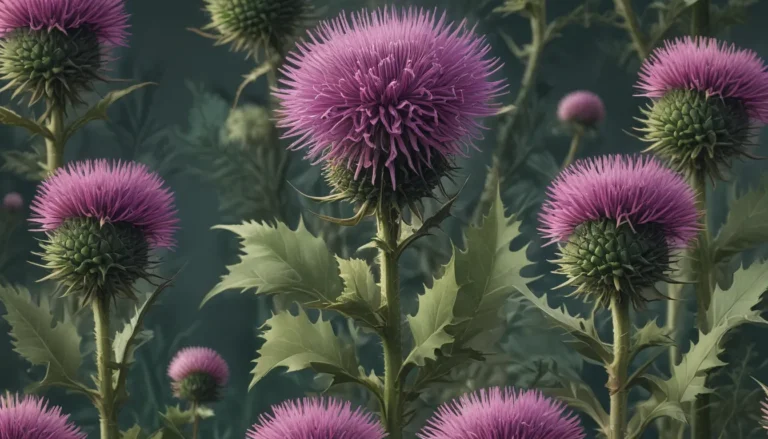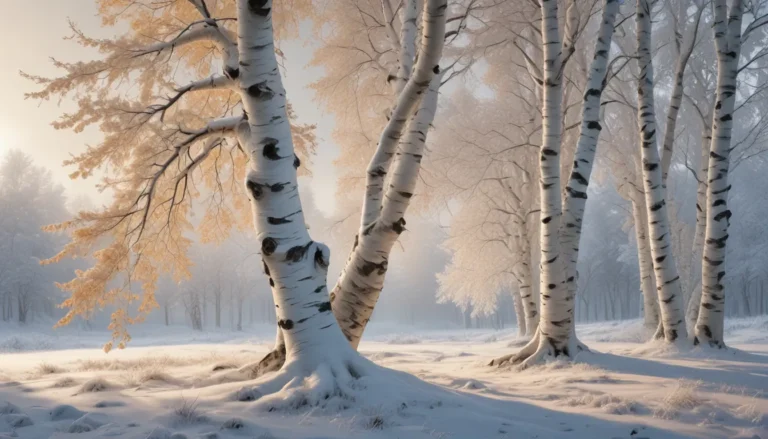The pictures we use in our articles might not show exactly what the words say. We choose these pictures to make you interested in reading more. The pictures work together with the words but don’t take their place. The words still tell you the important facts.
Welcome to the world of pitch pine trees, where resilience, beauty, and ecological significance collide to create a truly remarkable species. Native to eastern North America, these evergreen trees have captivated the hearts of nature enthusiasts with their rugged appearance and unique adaptations. From thriving in challenging environments to providing shelter for wildlife, pitch pine trees have a story to tell that is as fascinating as it is inspiring. Join us as we uncover 18 intriguing facts about pitch pine trees, shedding light on their extraordinary features and the vital role they play in the natural world.
The Resilient Nature of Pitch Pine Trees
Pitch pine trees, scientifically known as Pinus rigida, are admired for their ability to thrive in harsh conditions. From poor, sandy soils to drought-stricken landscapes, these trees have mastered the art of resilience, making them a vital component of many ecosystems. Their knack for enduring fire and their unique adaptations set them apart as true survivors in the plant kingdom.
Embracing the Unique Appearance of Pitch Pine Trees
One cannot help but marvel at the distinctive features of pitch pine trees. With their rugged, twisted trunks and irregular crowns, these trees stand out in the forest with a charm that is both striking and picturesque. The chaotic growth of their branches adds to their allure, making them a favorite subject for artists and nature lovers alike.
The Longevity of Pitch Pine Trees
Pitch pine trees are known for their impressive lifespan, with some individuals standing tall for several centuries. Their resilience and ability to withstand adverse conditions contribute to their longevity, making them a symbol of endurance in the natural world. As they weather the storms of time, pitch pine trees stand as a testament to the power of adaptation and survival.
The Protective Resin of Pitch Pine Trees
High resin content is a defining characteristic of pitch pine trees, offering them a layer of protection against pests and diseases. Beyond its role in defense, the resin also makes the wood of these trees highly resistant to decay, ensuring their durability and longevity in the forest ecosystem.
Pitch Pine Trees and Fire Ecology
In a world where wildfires pose a constant threat, pitch pine trees have evolved unique strategies to not only survive but thrive in the face of flames. Their thick bark and fire-resistant needles enable them to withstand intense heat, while their serotinous cones open and release seeds in response to fire, facilitating rapid regeneration. This adaptation has solidified their role as key players in fire ecology, shaping the landscape in profound ways.
Providing Sanctuary for Wildlife
The dense and twisted branches of pitch pine trees create a haven for a myriad of wildlife species. Birds, small mammals, and insects seek shelter and nesting sites within the intricate structure of these trees, highlighting their importance as providers of habitat and biodiversity.
Valuable Timber Source
Despite their knotty and irregular growth patterns, pitch pine trees are valued for their timber. The wood's durability and resistance to decay make it a sought-after material for construction and woodworking projects. Whether used in building homes or crafting furniture, the versatility of pitch pine wood is undeniable.
The Historical Significance of Pitch Pine Trees
Throughout American history, pitch pine trees have played a significant role in shaping industries and traditions. From their use in shipbuilding during the colonial era to the production of pitch, tar, and turpentine, these trees have left an indelible mark on the cultural and economic landscape of the region.
Source of Pitch and Resin
The high resin content of pitch pine trees has been historically exploited for the extraction of pitch, a viscous substance with a wide range of industrial and commercial applications. From waterproofing to sealing, the pitch derived from these trees has been a valuable resource for countless generations.
Ecological Importance of Pitch Pine Forests
Pitch pine forests are not just visually stunning but also crucial for supporting biodiversity and ecosystem health. These forests provide a habitat for a diverse array of plant and animal species, contributing to the overall balance and resilience of the ecosystem. Their presence is a testament to the interconnectedness of all living beings in nature.
Thriving in Protected Areas
Protected natural areas often serve as havens for pitch pine trees, where they contribute to the preservation of unique habitats and the conservation of biodiversity. By safeguarding these landscapes, we ensure the continued existence of these remarkable trees for future generations to appreciate and enjoy.
Landscaping and Reforestation Efforts
Due to their rugged beauty and adaptability, pitch pine trees are commonly used in landscaping projects and reforestation efforts. Their ability to thrive in challenging conditions makes them an ideal choice for restoring degraded landscapes and adding a touch of natural beauty to urban environments.
Medicinal Uses of Pitch Pine Trees
The resin derived from pitch pine trees has a long history of medicinal use, with applications ranging from wound healing to respiratory treatments. The healing properties of this resin have been valued by generations past and continue to hold promise in modern healthcare practices.
Cultural Significance in Native American Traditions
In some Native American cultures, pitch pine trees hold deep cultural significance, symbolizing resilience, strength, and the enduring spirit of nature. These trees have woven themselves into the fabric of tradition, serving as symbols of connection and endurance for indigenous communities.
Thriving in Urban Landscapes
Pitch pine trees are not confined to natural settings but are also thriving in urban environments. Their ability to withstand pollution, compacted soil, and other stressors commonly found in cities makes them valuable additions to urban forestry efforts. By bringing a touch of nature to urban spaces, these trees remind us of the resilience and adaptability inherent in all living beings.
A Symbol of Resilience and Endurance
At the core of pitch pine trees lies a powerful symbol of resilience and endurance. Their ability to thrive in adverse conditions and bounce back from challenges serves as a source of inspiration for all who encounter them. In a world filled with uncertainties, these trees stand tall as beacons of strength and perseverance.
Focusing on Conservation
Given their ecological importance and unique characteristics, pitch pine trees have become focal points for conservation efforts. By preserving their habitats and ensuring their continued existence, we not only protect a valuable species but also safeguard the delicate balance of ecosystems that rely on their presence. The conservation of pitch pine trees is a calling to protect the natural world and honor the legacy of these resilient beings.
As we uncover the 18 fascinating facts about pitch pine trees, we gain a deeper appreciation for their significance and the need to conserve and protect these remarkable trees for future generations. By celebrating their resilience, beauty, and ecological importance, we draw attention to the interconnectedness of all life forms on Earth and the profound impact that each species has on the intricate web of nature.
Conclusion
In conclusion, the pitch pine tree stands as a testament to the power of adaptability, resilience, and endurance in the natural world. From their unique adaptations to their historical significance, these trees embody a legacy that spans generations and speaks to the intrinsic value of all living beings. By understanding and celebrating the remarkable features of pitch pine trees, we deepen our connection to the natural world and cultivate a sense of responsibility towards its preservation and protection.
FAQs
What are the main characteristics of pitch pine trees?
Pitch pine trees are characterized by their stout, twisted trunks, dark green needles in bundles of three, and distinctive, resinous sap with a strong odor. These trees are well-adapted to survive in fire-prone environments, thanks to their thick bark and serotinous cones.
How can pitch pine trees be used by humans?
Pitch pine trees have been historically utilized for various purposes, including timber for construction, resin extraction for naval stores, and as an ornamental tree in landscaping. Additionally, the pitch pine's dense wood is valued for its durability and is used in crafting furniture, flooring, and other wooden products.
At the heart of our commitment to delivering trustworthy and engaging content lies the dedication to sharing valuable insights and information with our audience. Each fact we present is a testament to the collective knowledge and passion of individuals who contribute to the ever-expanding world of learning and discovery. As we journey through the realm of pitch pine trees and beyond, let us continue to explore, appreciate, and protect the wonders of nature that surround us.






